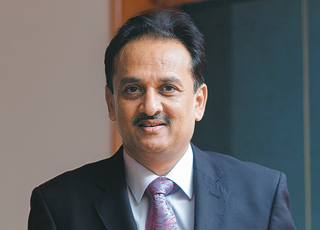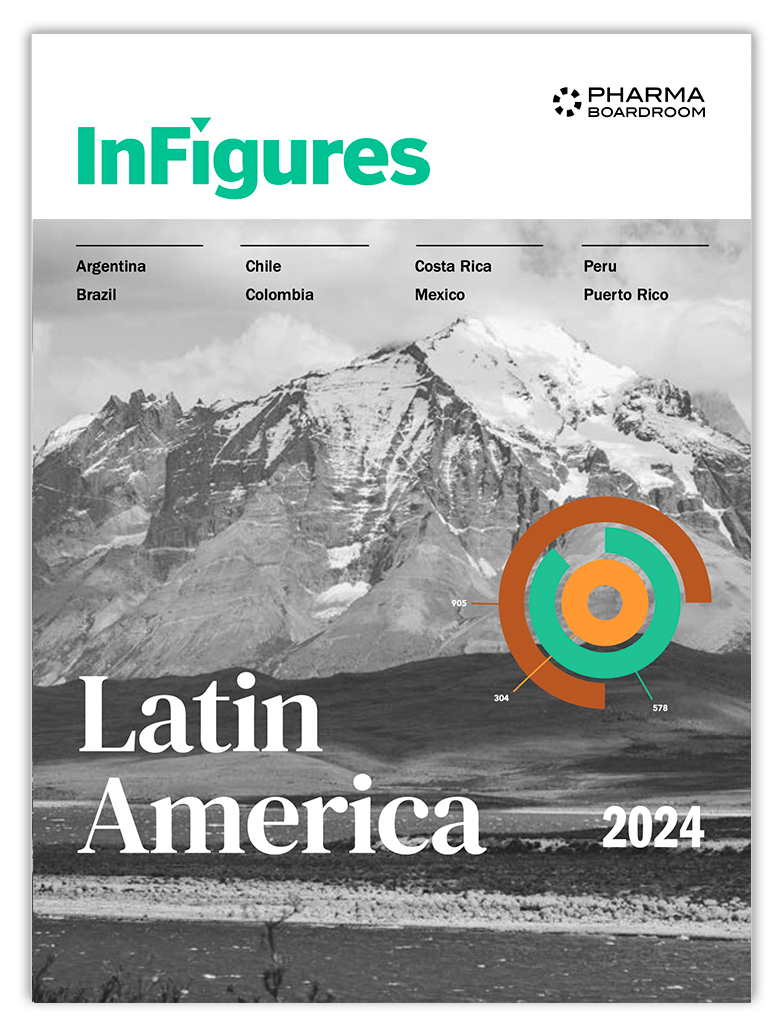In this exclusive interview, Binish Chudgar, vice-chairman and managing director of Intas, the largest privately-owned Indian pharmaceutical company with sales of over USD 1.7 billion during the last financial year, provides insights into the company's growth model and M&A approach, as well as his objectives with regards to a large-scale acquisition in the US. He also gives us an overview of the company’s biosimilar strategy, his assessment of the compliance issues affecting the Indian industry and the price erosion shaping the US generics market.
In 2018, Intas proudly stands as India’s largest privately owned pharmaceutical company, although the company was posting revenues of only USD 100,000 when you took over in 1994. How would you characterize the Intas business model?
Our growth matrix is based on various geographies and product baskets. In terms of geographies, Intas has historically been very strong in India, while we started exporting to Europe in 2001, thereby becoming one of the first Indian generic companies to tap developed markets, and we initiated our US operations five years after. In terms of geographic expansion, we truly look at building a balanced footprint, where the varying performances of our different markets compensate each other.
Our products model is threefold. First comes our me-too, vanilla generics division which we started over two decades ago and – second – our oncology and parenteral business, in which we have developed a remarkable expertise. In international markets we are mostly known as an oncology company. Added-Value Products (AVPs), i.e. branded products requiring marketing capacities and a dedicated field force to propel market penetration, stands as our third business division as well as the one in which we are investing the most resources at the moment. Biosimilars are also part of our AVP operations.
Intas has so far chosen to market its biosimilars in Europe by itself rather than partnering with multinational companies, unlike other Indian companies, such as Biocon and its partnerships with Mylan and Sandoz. What are the rationales behind this strategy?
First of all, I want to highlight that, with filgrastim, Intas became the first ever Indian company to launch a biosimilar in Europe [approved in February 2015 and marketed under the name Accofil™ – Ed.]. Today, Intas remains the only India-based company to have a biosimilar product approved in European markets.
Multinational companies such as the one you just mentioned are typically multi-billion-dollar businesses. Our feeling is that they may not do justice to a product with a sales potential ranging from USD 50 to USD 100 million, as the latter would not be particularly substantial with regards to the overall operations of these companies. As a result, we will continue marketing by ourselves all our current and upcoming oncology products, because we have a long-term interest in this strategic therapeutic area.
How do you balance the high development costs of biosimilars with the ever-increasing competition in Europe?
When we started working on our first biosimilars, the development costs were indeed phenomenally high, as we did not know exactly the expectations of the regulators. Today, European regulatory authorities have started establishing clearer and more precise guidelines, and – as a result – the R&D cost for biosimilars has been substantially decreasing over recent years.
The context is still completely different in the US, where receiving a Biologics License Application (BLA) is required. Moving forward, it nonetheless seems that the US FDA’s development guidelines will also become clearer, while the most challenging costs to control for the US market relates to the manufacturing of biosimilars, rather than to their development.
Overall, Intas started its biosimilar program around 12 years ago, and we have already launched 12 biologics in India. Moving forward, we would like to bring one or two of these biosimilars onto the global stage each year. Furthermore, we are currently running six biosimilar programs at the moment, mainly in oncology and also for autoimmune diseases.
Although negotiations recently stopped, Intas emerged as the frontrunner in the acquisition of Mallinckrodt’s US specialty generics business. However, filings show that sales for the nine months to September 2017 declined by 16 percent and the US contributed to nearly four-fifths of this division’s sales. After having acquired Actavis/Teva’s UK and Ireland businesses – one of the best performing companies in these two countries – why did you change your M&A approach to target an underperforming asset?
Our vision is to only go for M&A deals that will – above all – strengthen our company’s structural capacities and give us an edge in the mid- or long-term.
Although they were posting margins of over 40 percent, Actavis UK and Ireland were purely vanilla generics businesses; product wise, these portfolios will therefore not bring Intas to new heights. However, when combining Actavis’ manufacturing basis in the UK and Ireland with the quality of their management teams, it is easy to understand how this acquisition has improved the company’s relationship with the market, while providing us with a better understanding of the countries’ sales and distribution channels. These two aspects – the company’s management teams and manufacturing assets – will definitely better position Intas for future growth, while it would have taken us a lot of time to assemble such quality assets by ourselves. Today, our heightened strength allows us to better service our European markets, while we will generate revenues of around USD 425 million in the UK and Ireland post acquisition, with an additional EUR 200 million [USD 245 million] coming from the rest of Europe.
Regarding the Mallinckrodt acquisition, Intas is so far not active in the opioid segment, but the latter displays a strategic complementarity with our main area of focus, as pain management is a key aspect of oncology treatments. However, as opioids can only be manufactured in the continent of destination of the products, acquiring Mallinckrodt’s US specialty generics business emerged as the perfect opportunity for us, as it would directly establish Intas as market leader in the US opioid business. Furthermore, Mallinckrodt is a US-focused company which we could have developed in Europe, so Intas stood as the perfect exit strategy for Mallinckrodt’s specialty generics business, and the company’s management and employees truly acknowledged it.
However, given the US opioid crisis, the significant resources required to advance such a large acquisition and the extensive due diligence processes it implies, negotiations could not be extended ad vitam aeternam. Looking forward, I however consider that the latter could resume within a few years, when the opioid crisis will be better controlled.
Price erosion in the US generics market was in excess of 15 percent in 2017 and will perhaps be at similar levels in 2018 due to sales channel consolidation, US Congress crackdown on price hikes and a spurt in competition from newer entrants. Is Intas’ focus on hospital products a way to protect its US business from price erosion?
That’s more an indirect benefit from our current positioning, while we foresee price erosion happening in the hospital products segment too. The latter may however occur to a more limited extent and at a slower pace than in other product categories, as there is a relatively small number of FDA approved plants manufacturing oncology parenteral and hospital products.
With regards to price erosion in the US generics business, I believe that the latter follows a cyclic model and will therefore be corrected within three to four years, based on a demand and supply logic. As prices continue to decrease, manufacturing plants shut down, which nurtures the drive for M&A deals.
In this regard, it is particularly difficult for Indian companies to cope with current price erosions, as they have to ship their products from India to the US. Making this model sustainable and completive requires large inventories, which explains why Indian companies have been badly hit by erratic pricing in the US, the number one export market for the Indian pharmaceutical industry.
On the other hand, the prices of API intermediates have been increasing substantially as China strengthened its control of pollutions norms, therefore creating a supply crunch for API intermediates. The latter has automatically impacted the price of pharma APIs, which will – ultimately – increase generics prices in the US market. Looking forward, I nonetheless believe that the margins that Indian manufacturers enjoyed before the beginning of the current cycle are definitely gone.
After decades of eye-catching success in international markets, India-based manufacturers were severely hit by increasing regulatory scrutiny over the past four years. As the head of one of the country’s largest pharmaceutical companies, what is your take on this situation?
The level of regulatory scrutiny that a pharmaceutical company has to cope with often depends on the significance of its market share in the relevant country – especially when it comes to the US FDA. In this regard, it truly makes a difference whether a company holds only a handful of products or ships 50+ INNs from a given plant; when holding a small market share, regulators would typically not go into full details, but compliance inspections suddenly reveal themselves extremely stringent and in depth once a company has a substantial position.
I see quality compliance as a learning curve, while one should bear in mind that regulatory standards are also constantly evolving. Across our multiple manufacturing plants, Intas has successfully passed 50+ US FDA inspections over the past two decades, and the US FDA inspects one of our plants every six month on average.
What will be the key success factors you will focus on moving forward?
We would like to grow our AVP division to a substantial size and ensure it makes up over 30 percent of our revenues within the next five years. In this context, a large share of our resources is allocated to NCEs and biosimilar programs and we must ensure they are on the right track and advance at a satisfactory pace.
Historically, our core strength lies in mass manufacturing and R&D, and we must keep on sharpening these assets in the days to come. To fulfill this vision, we must continue acquiring and retaining the best talent across our organization to ensure we can fully leverage the diversity of the markets we operate in and the variety of products we are developing. As a result, I dedicate a large amount of my time to recruitment.
In this global competition for talent acquisition, how easy is it for Intas to attract the best pharma executives?
Pharmaceutical executives respect the remarkable pace at which Indian companies like Intas have been able to develop themselves into global players. Although this statement may not fully apply to NCE programs, talented professionals have also become extremely receptive to our value proposal in the biosimilar and generics spaces.
Furthermore, by joining a fast growing, ambitious company, they know that they will have a significant impact on what the company will look like in five or ten years, which is particularly exciting in their eyes.
After having increased the company’s sales from USD 100,000 in 1994 to over USD 1.7 billion in the last financial year, how do you see the future for Intas?
Our objective is to grow 18 percent during the current financial year, while the rest of the Indian industry is set to grow at a high single digit rate. Currently, we are focused on heavily investing in the company’s future.
Through the challenging early years, we have however learnt how to get the best returns on investment, and this expertise will be extremely useful moving forward. This aspect actually does not exclusively apply to me or to Intas, but to all Indian CEOs that successfully developed their companies before India became a respected and dominant player in the global pharmaceutical market.







